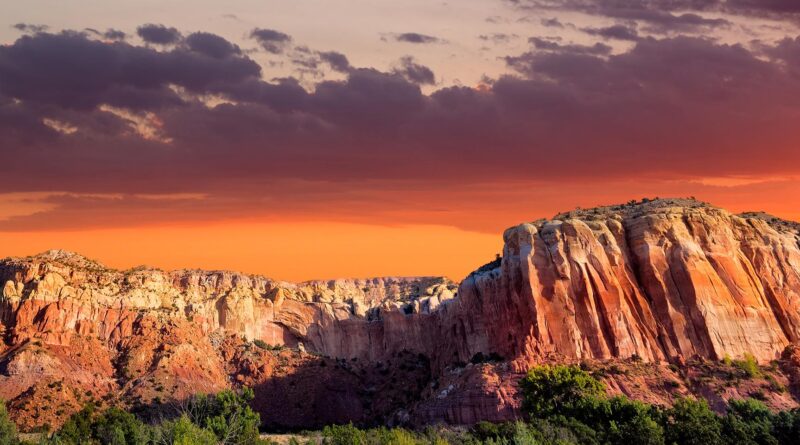History Of New Mexico
New Mexico, located in the southwestern United States, is a state brimming with a captivating and diverse history. From ancient indigenous civilizations to Spanish colonization, and the blending of cultures that followed, the story of New Mexico is one of resilience, exploration, conflict, and cultural exchange. In this article, we will delve into the fascinating history of New Mexico, tracing its origins to the pre-Columbian era and navigating through centuries of change and transformation.
Ancient Times: Pre-Columbian Civilizations (5000 BCE – 1500 CE)
Long before the arrival of European explorers, the land that is now New Mexico was home to various indigenous communities. Ancient cultures such as the Ancestral Puebloans (Anasazi), Mogollon, and Hohokam inhabited the region, leaving behind remarkable cliff dwellings, petroglyphs, and pottery. The Chaco Canyon, with its impressive structures and ceremonial centers, remains a testament to the advanced civilization that thrived in the area.
Spanish Colonization and the Santa Fe Trail (1500s – 1800s)
In the 16th century, Spanish explorers, including Francisco Vázquez de Coronado, ventured into the region in search of legendary cities of gold. They established Santa Fe as the capital of the province of Santa Fe de Nuevo México in 1610, making it the oldest capital city in the United States. The Spanish influence is evident in the architecture, traditions, and the adoption of Catholicism that still permeate the state.
During the 19th century, the Santa Fe Trail became a vital trade route linking Missouri to Santa Fe. It facilitated the exchange of goods and ideas between Anglo-American merchants and the Hispanic population, contributing to the multicultural fabric that defines New Mexico today.
Becoming a U.S. Territory and Statehood (1800s – 1912)
Following the Mexican-American War, the Treaty of Guadalupe Hidalgo in 1848 transferred much of present-day New Mexico to the United States. The region then became a U.S. territory, and the arrival of American settlers marked a new era of development and conflict. The quest for statehood lasted several decades, primarily due to political and cultural tensions. However, on January 6, 1912, New Mexico was officially admitted as the 47th state of the Union.
Cultural Diversity and Contributions (20th Century – Present)
New Mexico’s cultural diversity is a defining characteristic that enriches its history. The state is a melting pot of Native American, Hispanic, Anglo-American, and other immigrant cultures. This blending is particularly evident in art, music, cuisine, and traditions. Notable artists like Georgia O’Keeffe were drawn to the unique landscapes and vibrant communities of New Mexico, leaving an indelible mark on the art world.
Furthermore, New Mexico played a crucial role in the development of atomic energy during World War II. The top-secret Manhattan Project was based in Los Alamos, where scientists, including J. Robert Oppenheimer, worked on the creation of the first atomic bomb.
The history of New Mexico is a tapestry woven from the threads of ancient civilizations, Spanish colonization, American expansion, and cultural diversity. The state’s remarkable heritage is manifested in its archaeological treasures, historic sites, and vibrant traditions. By exploring the past, we gain a deeper appreciation for the present, as New Mexico continues to embrace its rich history while looking towards a future that honors its diverse cultural roots.
Discover more from City Towner
Subscribe to get the latest posts sent to your email.




